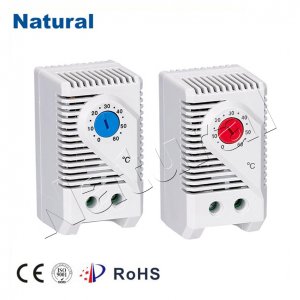In today’s fast-paced world, convenience and efficiency are at the forefront of our daily lives. From smartphones to smart homes, we continually seek innovative ways to streamline and improve our experiences. One such innovation that has quietly revolutionized our lives is the regulable thermostat—a device that plays a pivotal role in maintaining comfortable indoor temperatures while saving energy and reducing costs.

The Evolution of Thermostats Before we delve into the marvel of regulable thermostats, let’s take a step back and appreciate how thermostats have evolved over the years. Traditionally, mechanical thermostats were the norm, relying on simple bimetallic strips that expanded and contracted with temperature changes to control heating or cooling systems. While effective, they lacked the precision and adaptability we expect in the 21st century. The Birth of Regulable Thermostats Regulable thermostats, often referred to as programmable or smart thermostats, mark a significant leap forward in the world of indoor climate control. These intelligent devices are designed to learn and adapt to your daily routines, ultimately creating a seamless balance between comfort and energy efficiency. One of the key features of regulable thermostats is their ability to be programmed. Homeowners can set schedules that align with their daily activities. For example, you can program your thermostat to lower the temperature while you’re at work and raise it shortly before you return home. This not only ensures comfort but also helps reduce energy consumption during idle hours, leading to substantial cost savings over time. The Smart Revolution With the advent of the Internet of Things (IoT), regulable thermostats have become even smarter. They can now connect to your Wi-Fi network, allowing you to control them remotely via smartphone apps or voice-activated assistants like Amazon Alexa or Google Assistant. This level of connectivity empowers homeowners to make real-time adjustments to their HVAC systems, ensuring that their homes are always at the desired temperature, no matter where they are. Furthermore, these thermostats utilize advanced algorithms and sensors to analyze your home’s climate and adjust settings accordingly. They learn from your preferences, adapting to changes in weather and occupancy patterns. This adaptive intelligence optimizes comfort while simultaneously reducing energy waste. Energy Efficiency and Environmental Impact Regulable thermostats are not only convenient but also environmentally friendly. By optimizing temperature control, they significantly reduce energy consumption and carbon emissions. This not only lowers utility bills but also contributes to a more sustainable future by curbing our collective carbon footprint. Cost Savings One of the most compelling reasons to invest in a regulable thermostat is the long-term cost savings. By efficiently managing your heating and cooling systems, these devices pay for themselves over time. In fact, studies have shown that regulable thermostats can reduce energy bills by up to 15%, making them a wise investment for homeowners looking to save money while reducing their environmental impact. Conclusion Regulable thermostats have come a long way from their mechanical ancestors, evolving into sophisticated devices that enhance our comfort, save energy, and reduce costs. Their ability to adapt to our lifestyles, connect to smart home ecosystems, and promote environmental sustainability makes them a valuable addition to any modern household. As we continue to prioritize energy efficiency and sustainability, regulable thermostats remain a shining example of how technology can benefit both individuals and the planet. So, if you haven’t already, it might be time to consider making the switch to regulable thermostats and experience the marvel of modern heating solutions for yourself.